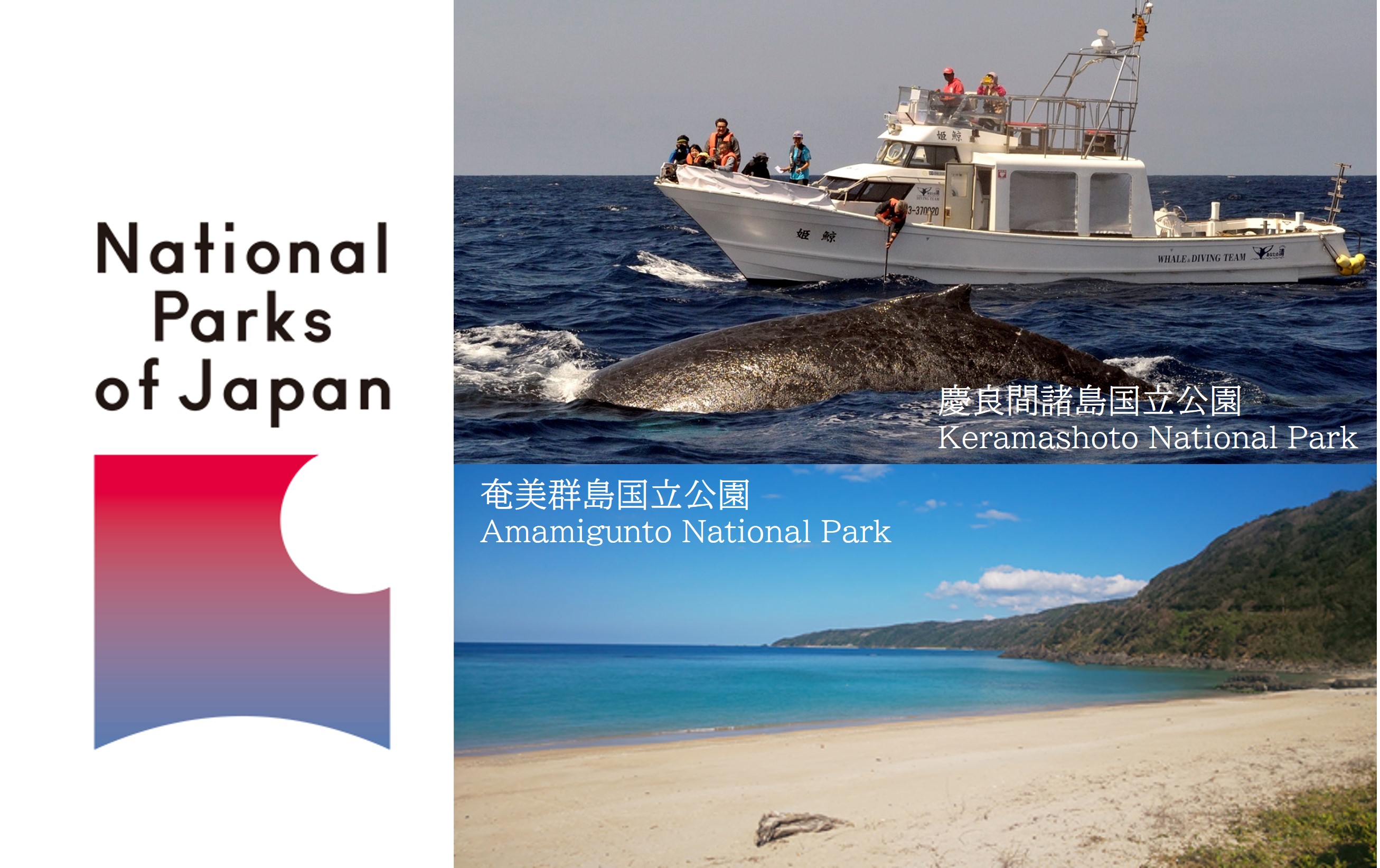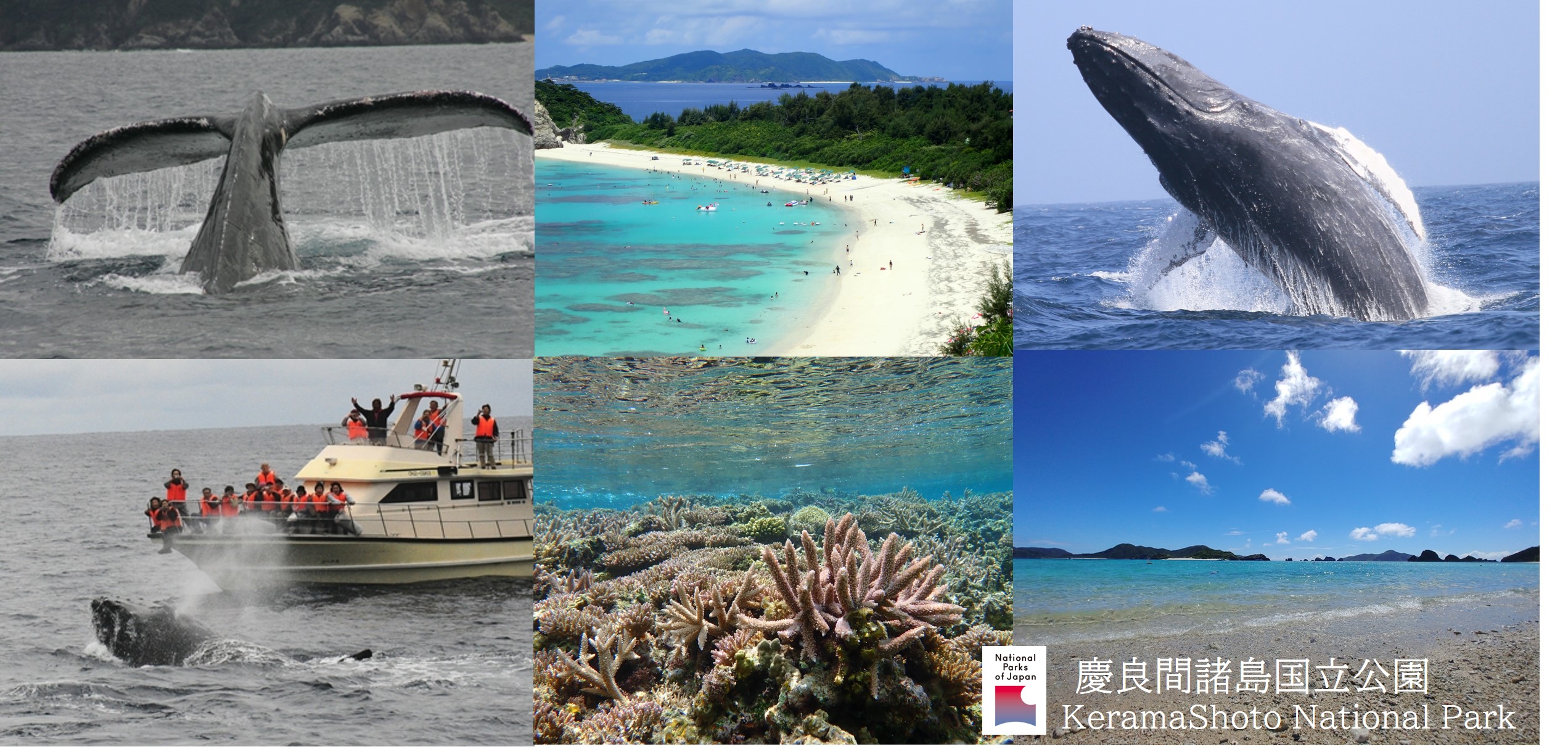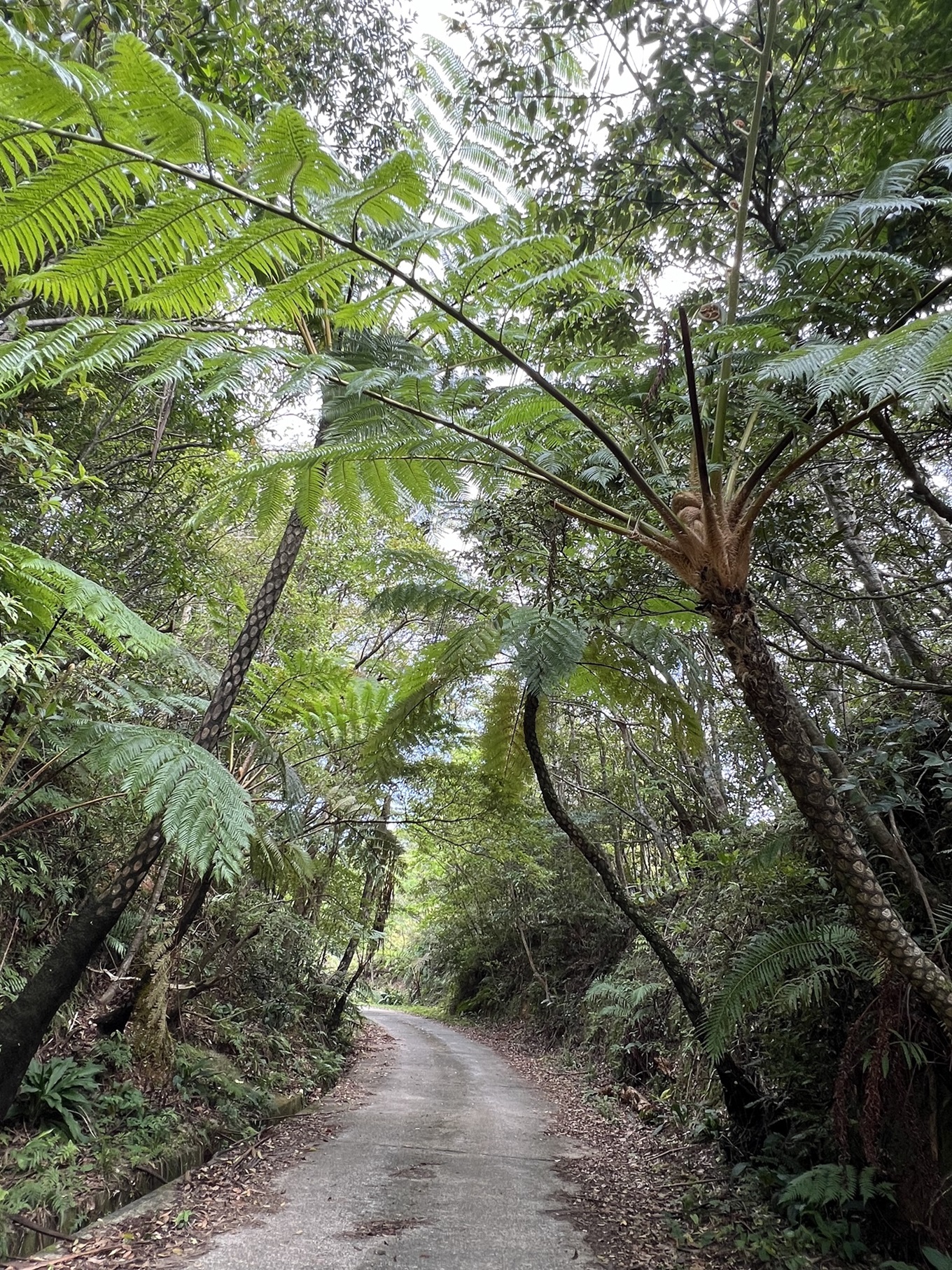Tourism EXPO Japan 2025 Aichi/Central Japan

Kerama Islands National Park/Amami Islands National Park
The Kerama Islands (Japanese: Keramashoto) were designated a National Park on March 5th (Coral Day), 2014. Keramashoto National Park is made up of two villages: Tokashiki Village and Zamami Village, and is located about 40 km west of Okinawa's main island. Its landscape consists of many islands and the surrounding sea, whose distinctive color is known as "Kerama Blue", and which is densely populated by coral reefs with around 248 different coral species. It is also a breeding ground for humpback whales. With the sea accounting for more than 90% of its total area, with 90,475 ha of sea for 3,520 ha of land, Keramashoto National Park is a maritime National Park.
Marine activities such as scuba diving, stand-up paddling, snorkeling, or kayaking can be enjoyed regardless of the season. Whale-watching is also popular, with humpback whales visiting each year between December and March to breed and raise their young. Both villages in the National Park have their own whale-watching association, each with self-imposed rules for respectful observation. These efforts, undertaken with environmental consideration, aim to create a "sea where whales and humans coexist sustainably for the next 100 years". In 2024, the two associations began collaborating with the Ministry of Environment to create a brand book promoting Keramashoto National Park's respectful whale-watching practices.
We are waiting for you in Keramashoto National Park this winter!
Amami Archipelago National Park is a national park designated for its value of the diverse and rich ecosystems and environmental culture (scenery and climate formed through the relationship between people and nature) of the islands of the Amami Archipelago.
Amami Oshima Island was registered as a World Natural Heritage site due to its rich biodiversity. The island was cut off from the continent by the Late Miocene (approximately 12 million to 500 years ago), and Amami Oshima is still inhabited by relict endemic species such as the Amami rabbit. The Kuroshio Current and monsoons bring abundant rainfall, and the area nurtures a diversity of life from land to sea, including rainforests, which are rare in the subtropical zone, and coral reefs located at the world's northern limit. We will offer you an experience of visiting forests and oceans where many endemic plants and animals live, experience traditional culture handed down from our ancestors, stories of the lives of Amami people who live richly with nature, and "a journey of the mind that shows invisible things".We promote adventure tourism, gastronomy tourism, nature positive tourism, regenerative tourism sustainable tourism.
Marine activities such as scuba diving, stand-up paddling, snorkeling, or kayaking can be enjoyed regardless of the season. Whale-watching is also popular, with humpback whales visiting each year between December and March to breed and raise their young. Both villages in the National Park have their own whale-watching association, each with self-imposed rules for respectful observation. These efforts, undertaken with environmental consideration, aim to create a "sea where whales and humans coexist sustainably for the next 100 years". In 2024, the two associations began collaborating with the Ministry of Environment to create a brand book promoting Keramashoto National Park's respectful whale-watching practices.
We are waiting for you in Keramashoto National Park this winter!
Amami Archipelago National Park is a national park designated for its value of the diverse and rich ecosystems and environmental culture (scenery and climate formed through the relationship between people and nature) of the islands of the Amami Archipelago.
Amami Oshima Island was registered as a World Natural Heritage site due to its rich biodiversity. The island was cut off from the continent by the Late Miocene (approximately 12 million to 500 years ago), and Amami Oshima is still inhabited by relict endemic species such as the Amami rabbit. The Kuroshio Current and monsoons bring abundant rainfall, and the area nurtures a diversity of life from land to sea, including rainforests, which are rare in the subtropical zone, and coral reefs located at the world's northern limit. We will offer you an experience of visiting forests and oceans where many endemic plants and animals live, experience traditional culture handed down from our ancestors, stories of the lives of Amami people who live richly with nature, and "a journey of the mind that shows invisible things".We promote adventure tourism, gastronomy tourism, nature positive tourism, regenerative tourism sustainable tourism.
Co-exhibitor of National Parks of Japan, Ministry of Environment.
Sanriku-Fukko National Park/Towada-Hachimantai National Park :
Amamigunto National Park :
Ashizuri-Uwakai National Park :
Aso-Kuju National Park :
Aso-Kuju National Park / Kirishima-Kinkowan National Park :
Chubusangaku National Park :
Chubusangaku National Park / Fuji-Hakone-Izu National Park :
Eco Tourism Promotion Council :
Eco Tourism Promotion Council<Kamiichi town, Toyama/Gero city, Gifu/Toba city, Mie> :
Ise-Shima National Park :
Kerama Islands National Park/Amami Islands National Park :
Keramashoto National Park :
Kirishima-Kinkowan National Park :
National Park ( Nikko National Park / Oze National Park ) :
National Park (Yambaru National Park) / (Yakushima Park) :
National Park(Daisen-Oki National park)/(San'inkaigan National Park) :
National Park(Joshin'etsukogen/Myoko-Togakushi renzan) :
National Parks (Ise-Shima National Park/Yoshino-Kumano National Park) :
National Parks of Japan (Setonaikai National Park / Ashizuri-Uwakai National Park) :
Setonaikai National Park :
Towada-Hachimantai National Park :
Yakushima (Island) National Park :
Yambaru National Park :
Yoshinokumano National Park :
| Booth No | E-035 |
|---|---|
| Area | Japan |
| Official site | https://www.env.go.jp/nature/nationalparks/list/ |
| SNS Links |
Photos





